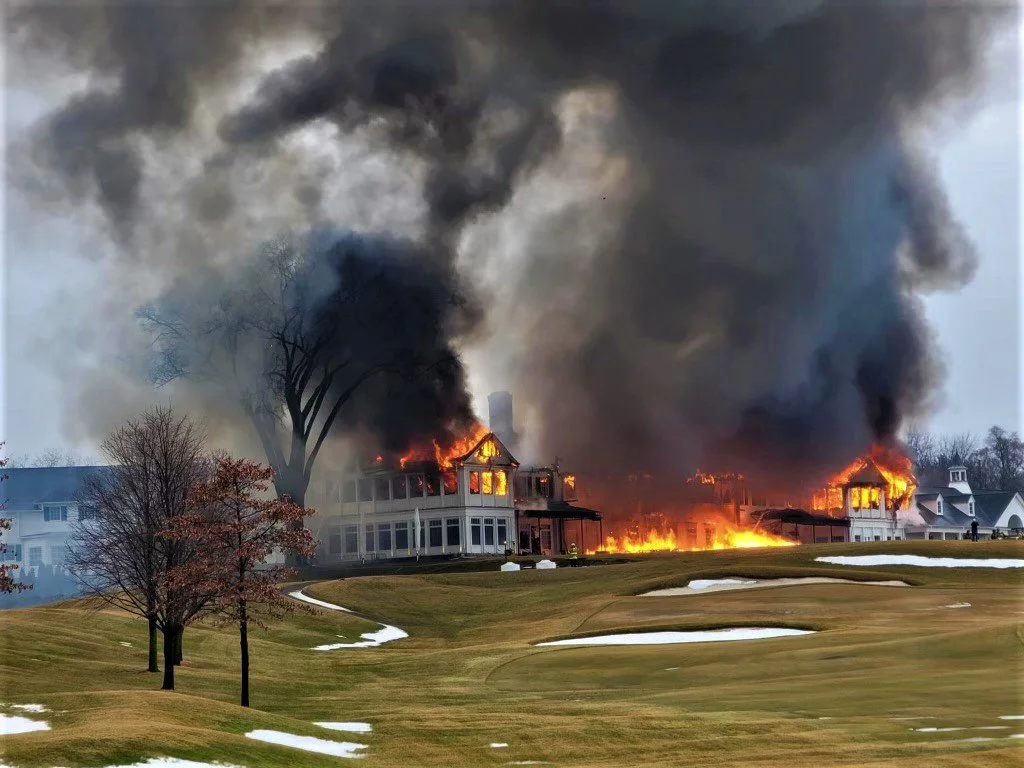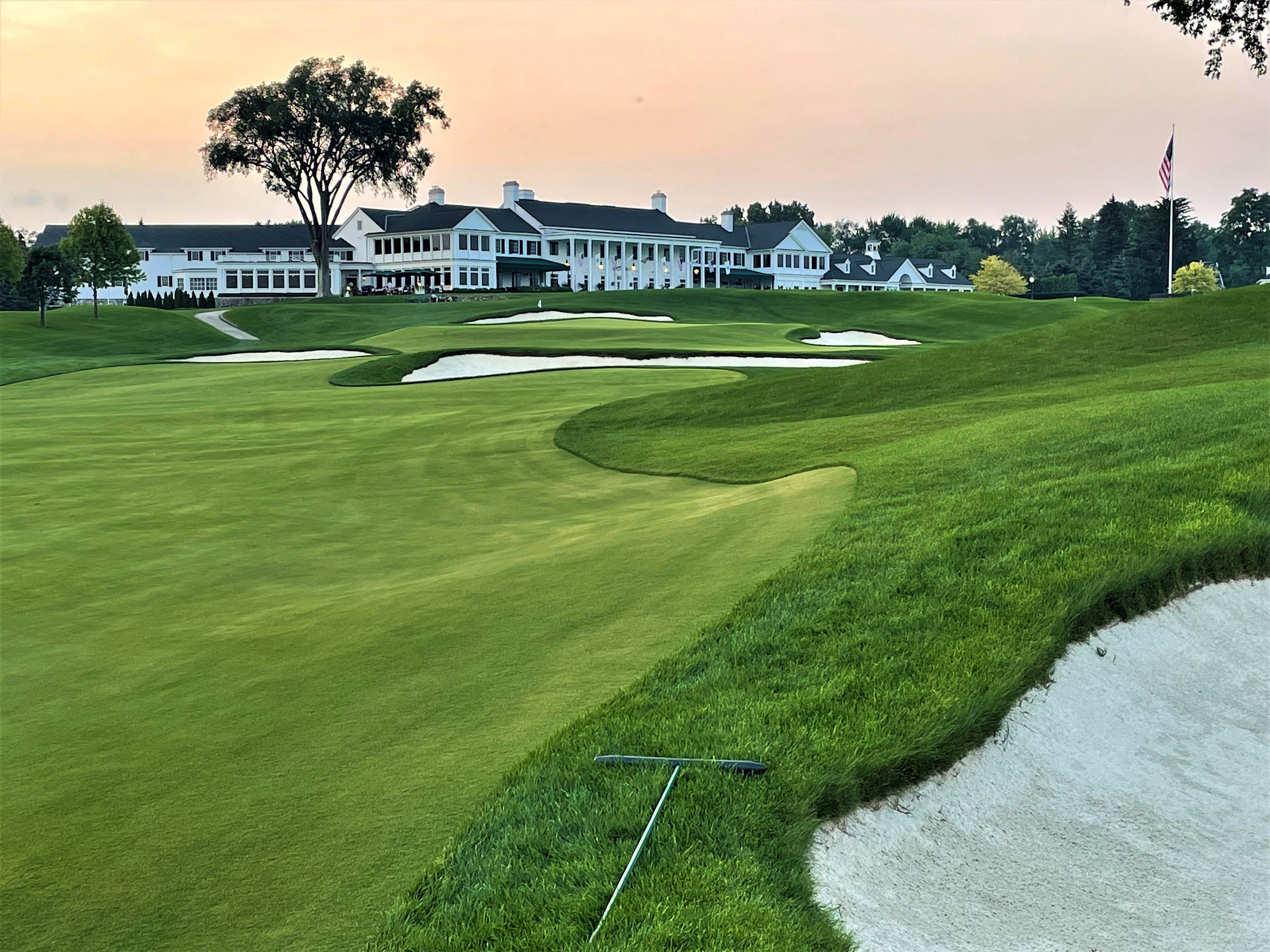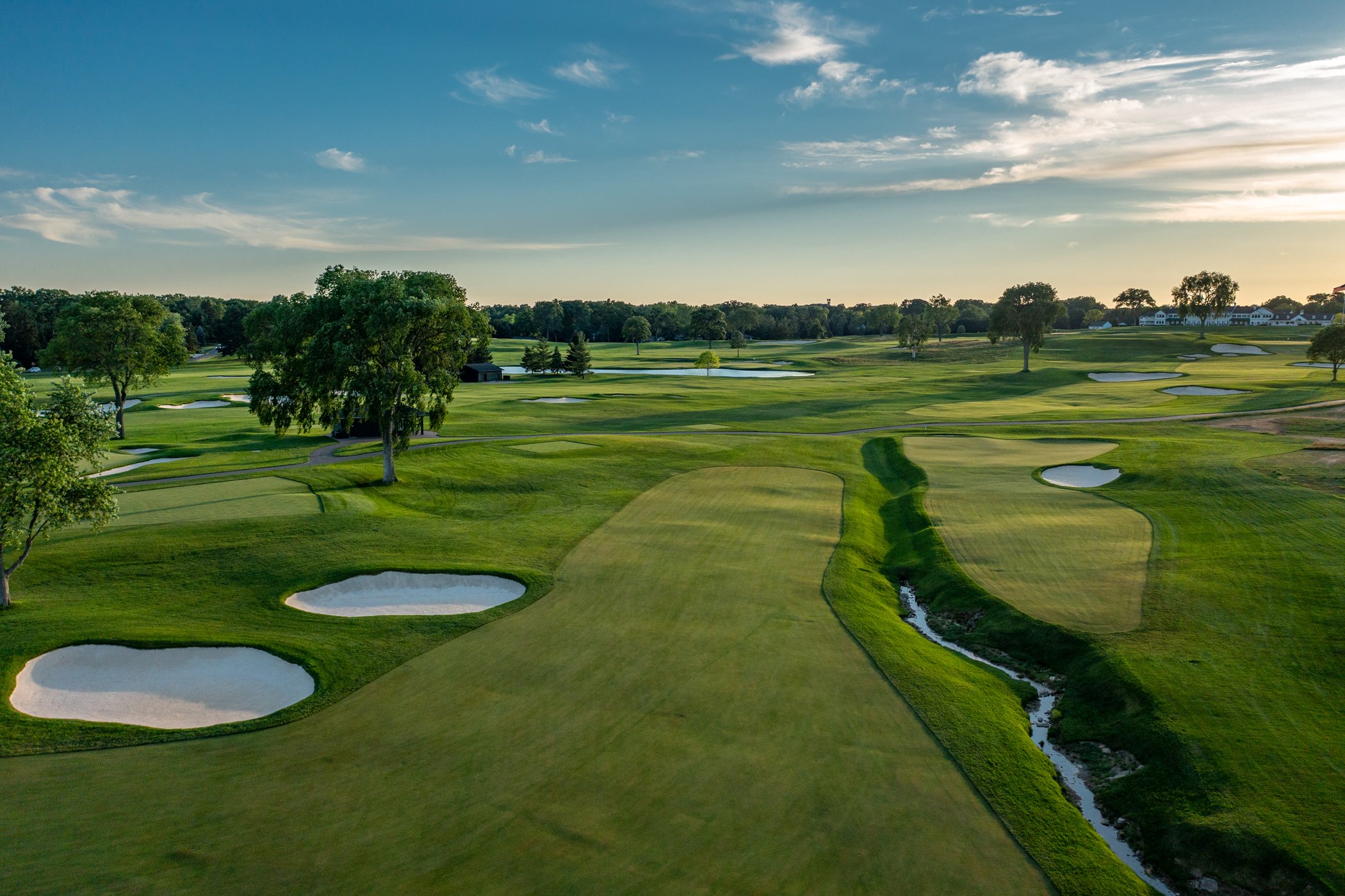Rising From the Ashes: Oakland Hills Will Rebuild a Replica Clubhouse
Some solace can be found by the comeback of another historic clubhouse fire at Western G&CC in Redford Township four years ago
By Tom Lang
This August would have been the 100th anniversary of when the Oakland Hills clubhouse first opened, in the late summer of 1922.
Now it’s a skeleton of charred wooden walls and timbers, with a collapsed in roof, after the massive fire that brought grownups to tears on a cold, windy Feb. 17 day.
But according to Oakland Hills’ president Rick Palmer, and friends of members there, those tears quickly dried up and changed into a driving will to come back stronger than ever.
“I can report that at our board meeting this past Saturday morning (2 days after the fire), the board unanimously made an easy decision to determine that the restored, rebuilt clubhouse will be a replica of what the iconic clubhouse was before the fire,” Palmer said to several media which included MI Golf Journal on Feb. 21.
“Actually, our membership and the national golf community really made that a very easy decision for us to make because of the outpouring of how special it is. Even our golf course architect, Gil Hanse, who wants our clubhouse to match his beautiful restoration work. So, I can conclusively report that.”
The largest portion of the clubhouse that faces the golf course is modeled after 1st President George Washington’s Mount Vernon.
The History is Not the Building, it’s Inside the Building:
While the building was nearly 100 years old itself, the golf history that people most worried about perhaps being lost was all the artifacts inside the clubhouse like trophies, paintings, letters from presidents, photos, wooden golf clubs and more. The building was quite literally a golf museum spanning a century.
“We have received and recovered several historical items,” Palmer said. “The process of assessing the condition of those items have not been concluded at this time and is ongoing. We’re hoping to retrieve more. We have several, but our restoration company is in the process with the insurance carrier of assessing whether they will be fully recoverable or restored.”
“Fire crews came in and announced to us that they had a window and (asked) where were the memorabilia at, and they kept going in and out of the facility, and actually passing it out to our employees, who formed kind of a bread line and loaded (the items) into a van. So, there are a lot of our valuable items that got recovered.”
But we cannot disregard the building’s place in history either. It was the pillar for hosting the people who competed in 14 major championships, including six U.S. Opens, two U.S Amateurs and three PGA Championships, plus the 2004 Ryder Cup.
As most golfers know, the famed South Course was closed for almost two years to undergo a full restoration and only reopened for play late in the 2021 season.
What course designer Gil Hanse and associates did was re-expose grand views across the natural landscape that had been over-run by trees the past couple generations. It also revealed the true features of the land where Donald Ross first designed the routing. One of those strongest features was a view of the clubhouse from almost any point on the course – never available through all the former trees – sitting high on the hill at the west end of the property, with a setting sun behind it bringing out magical views of history.
Sightlines across the land became dramatic again, like the original layout from 1918 that at the time Ross said God intended to be a golf course.
Outreach from the Community:
The club heard from people all across the globe, but the most relevant efforts we’ve come to expect came from those close to home.
“The first help that comes to mind is not from a club,” Palmer said. “We got outreach from the great folks at Barton-Mallow who (on the very next day) made their headquarters available and configured 25 workspaces, technology, and all the things that welcome us as long as we need it – which is the miracle of this – we were fully operational from an administrative perspective,” so soon after the fire.
In addition to the physical space, “their employees welcoming our employees has been really overwhelming. They know they’re displaced; they lost their place of work, they’ve made us feel like the Oakland Hills family, and we’re home. So, we’re dubbing it officially (that) we’re at ‘Oakland Hills Southfield.’”
Secondly, Palmer said all area clubs have reached out to make facilities for planned events and dining open to Oakland Hills members as well.
Then on a more national level, a non-profit organization called ClubsHelp Foundation along with the National Club Association (NCA) has created a fund just for employees at Oakland Hills whose jobs have been displaced. When difficulties like this strike, ClubsHelp and the NCA work with a network of golf course owners, club managers, golf course architects and golf professionals, members, and corporate partners to help. ClubsHelp has made an initial $5,000 donation and will match funds up and until the first $15,000 of outside donations. The collective goal is to raise $250,000. Tax-deductible donations from anyone may be made at https://donate.helpclubshelp.org/ohccfund/Campaign/Details
Been There – But Don’t Want to Do That:
In 2018, a similar all-wooden structure more than 90 years old, the clubhouse at Western Golf & Country Club in Redford Township near Five Mile Road, burned to the ground in June after a fire was discovered around 5:00 a.m. Its membership reacted with a similar resolve to build back better and stronger. They even hosted the Michigan Women’s Amateur less than three weeks after the fire.
Their membership decided to replace the clubhouse with a stone and glass structure, and move it closer to the golf course – also a Donald Ross design like Oakland Hills – and away from where the wooden structure began as a residential home with several additions built on.
“I remember waking up early that June morning and heard a reference to a big fire … and they had Western (Golf and Country Club) on TV, and I thought oh my God,” said teaching pro Terri Ryan, a social member at Western who used to be an assistant pro there in the 1980s. “I had just had lunch there the day before and a couple friends decided to join the club.”
With similar vibes coming out of Oakland Hills, Ryan praised how the Western leadership was very forthcoming with what was happening, and that set everyone’s mind at ease. She also referenced how Western’s history, while not as notable as Oakland Hills’, was all gone.
“I think the biggest question I had in my mind was what would it be like when it comes back,” Ryan added. “And it’s turned out great. I can’t say enough good things about our Board and our general manager and all they did. Everything is worth waiting for,” she added in reference to what could be advice to her Oakland Hills contemporaries.
“It was sad when I saw that fire going, because I have family and friends there (at Oakland Hills). My in-laws had their 50th anniversary there, my sister-in-law got married there, so many different memories at Oakland Hills. So, it’s sad, but at the end of the day I’m just glad no lives were lost – the same as it was at Western. There are memories there, but you have those forever.”





